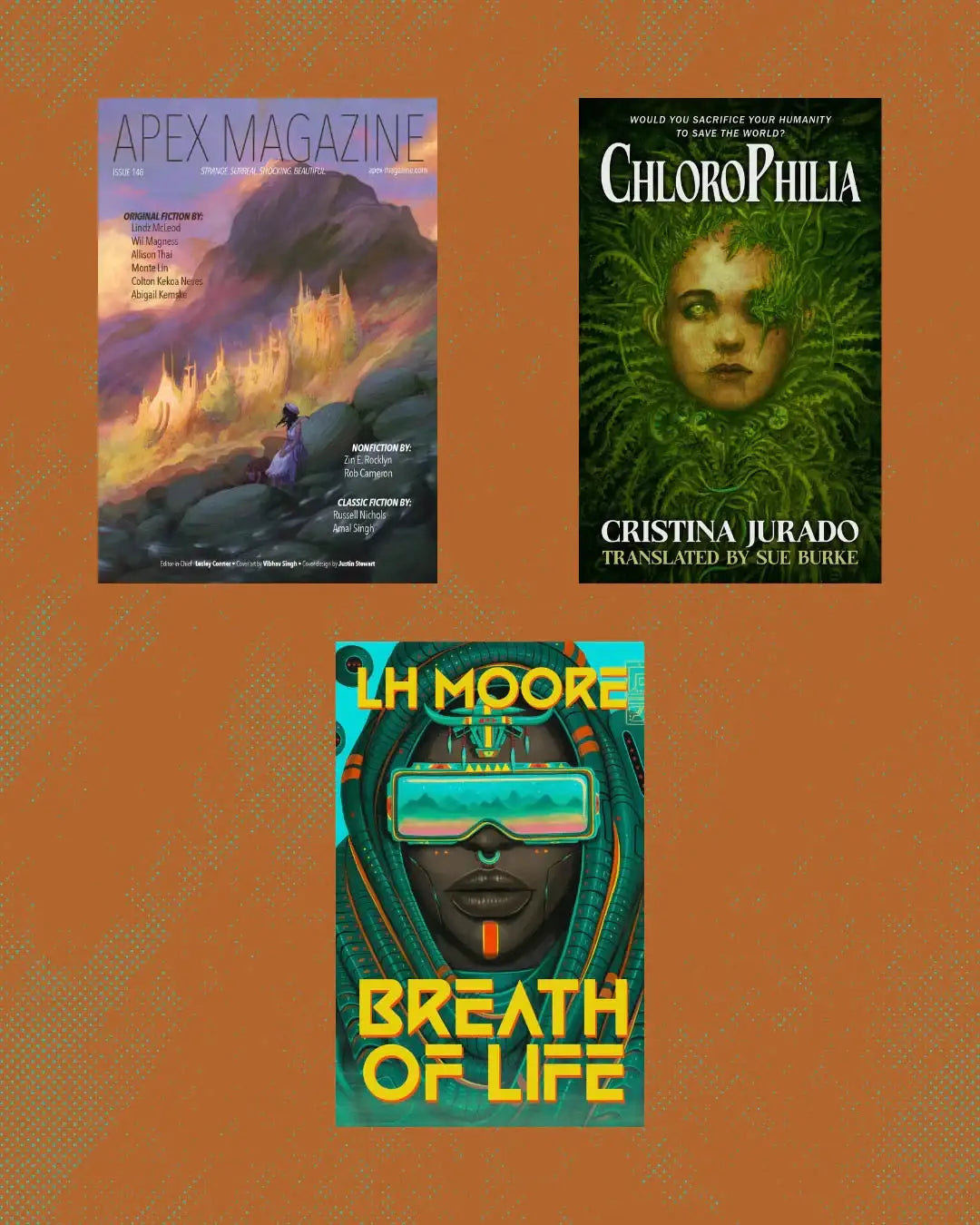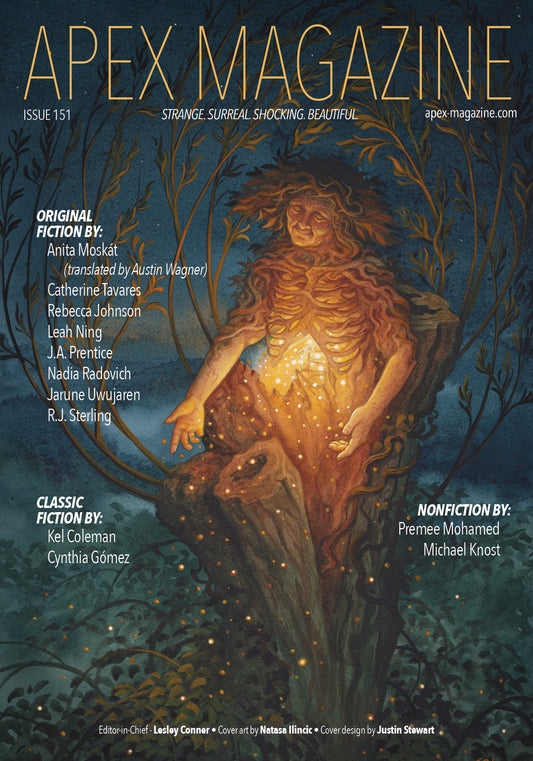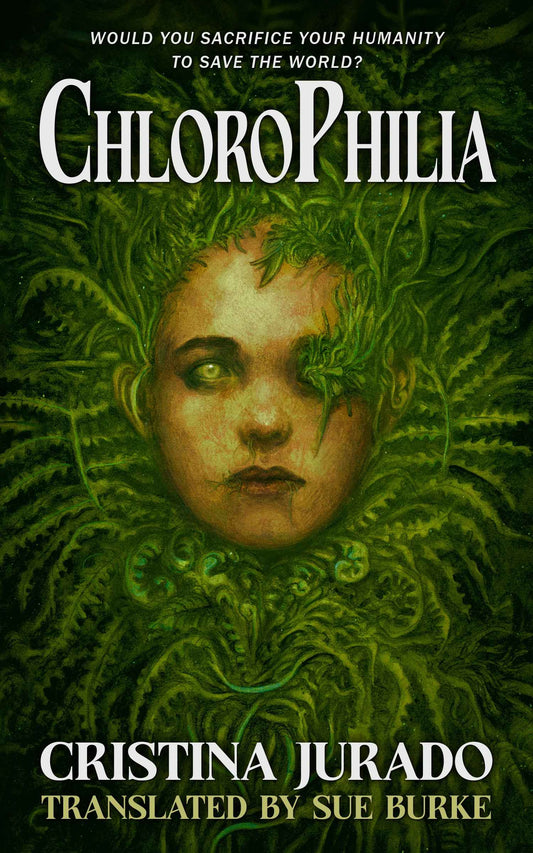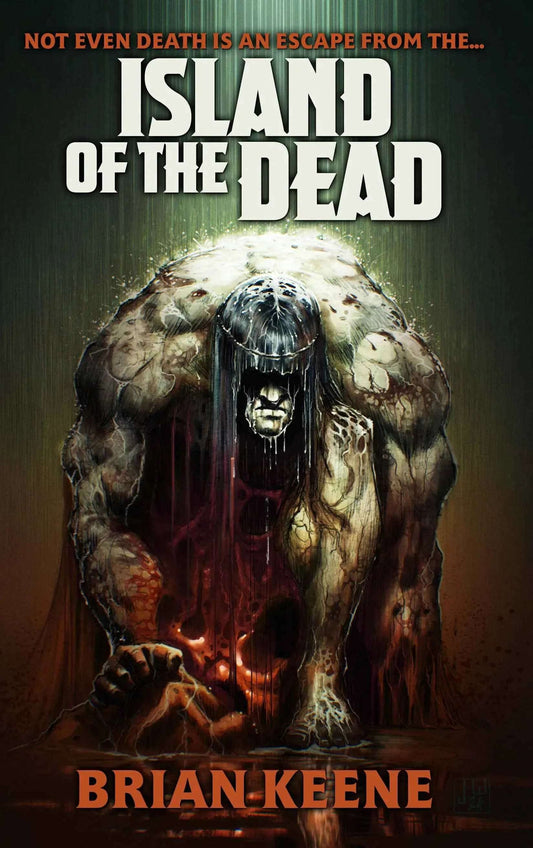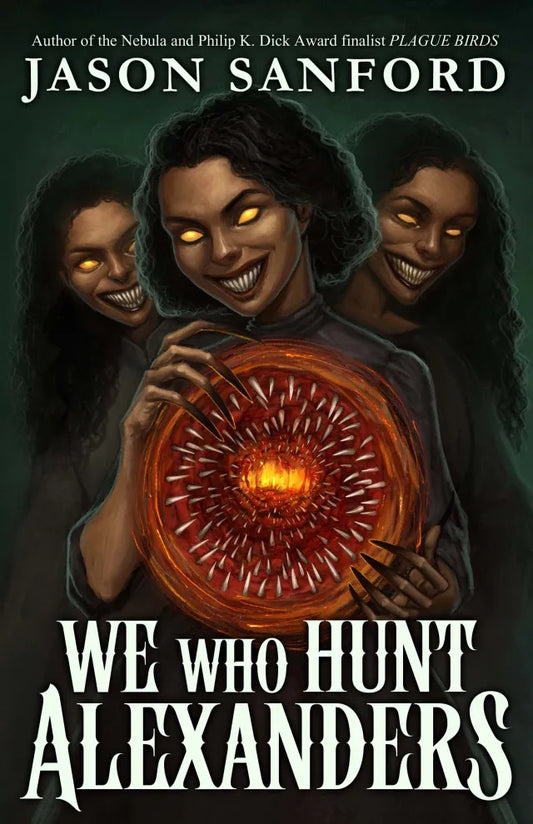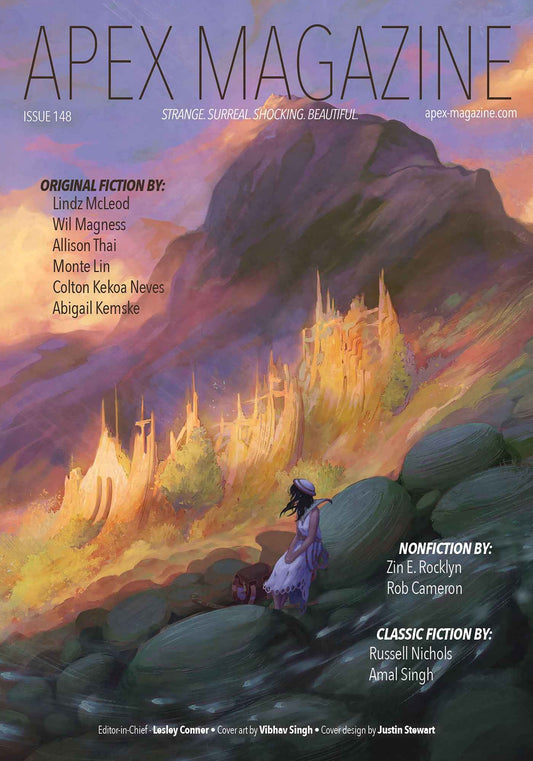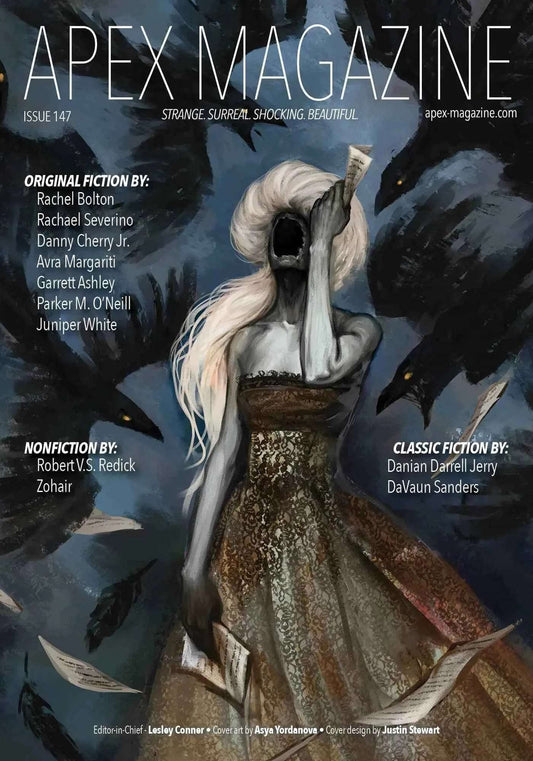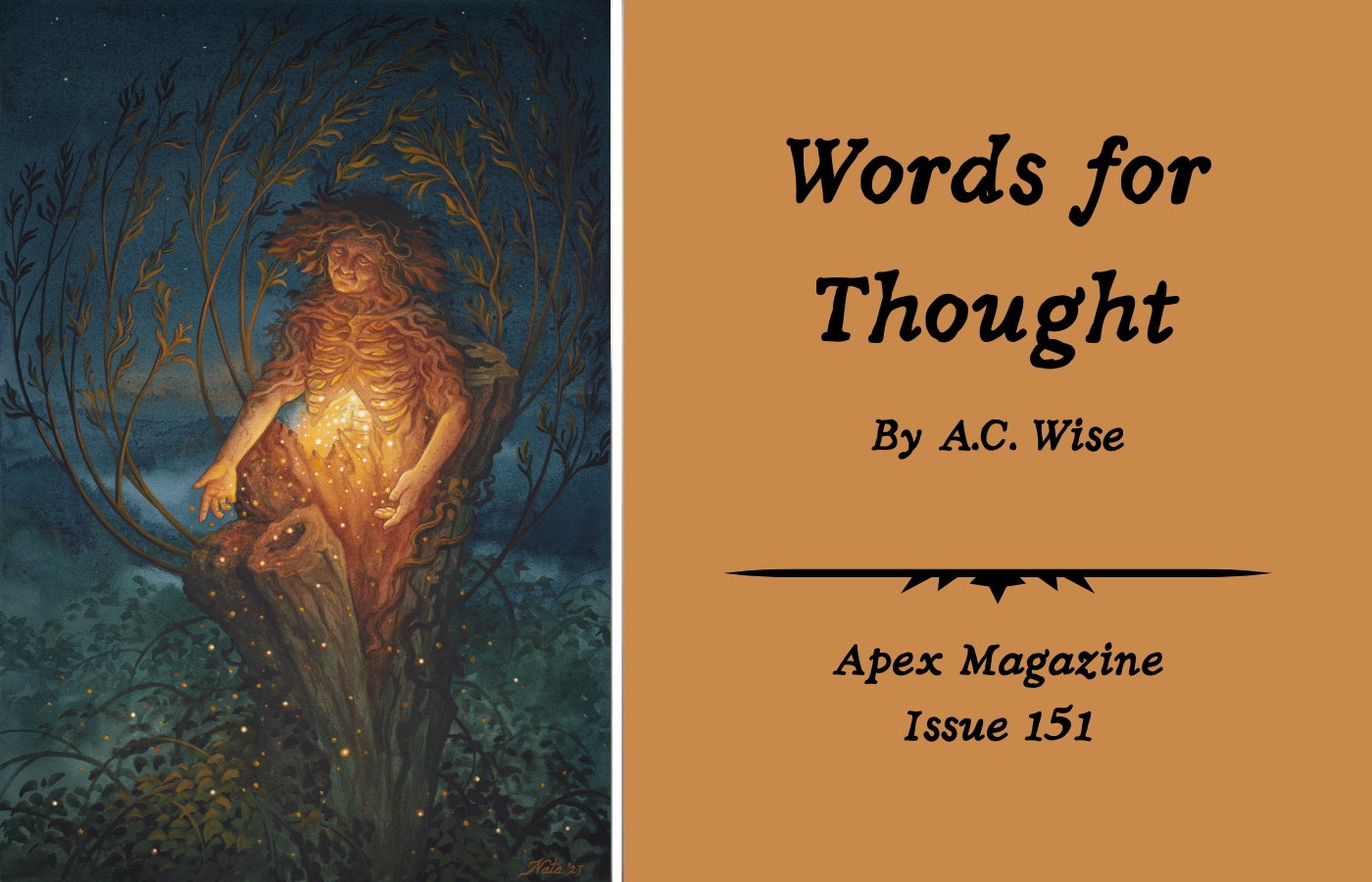
Welcome to another Words for Thought. The stories discussed this time around are all about change, grief, complicated family relationships, and letting go. They are dark and melancholy, which seems appropriate for the time of year. As always, there are spoilers ahead, so beware.
“Every Ghost Story” by Natalia Theodoridou, published in Reactor in August 2025 (https://reactormag.com/every-ghost-story-natalia-theodoridou/), takes place in a world where ghosts inexplicably appeared one day and now exist alongside the living.
It happened everywhere, all at once. The internet filled with videos of ghosts. People were disconcerted, but there was a surprisingly small amount of global panic. Some thought it was a massive prank, others a conspiracy. Most settled on it being a message from beyond, though nobody could agree what that message was. Or what beyond.
The narrator is attending Ghost Camp, a therapeutic environment meant to help people deal with their anxiety. The camp offers team building, group activities, discussion, and exposure to ghosts, but the people who run the camp are very explicit that it isn’t designed to provide answers. Confronting the unknown and being okay with it, letting go of preconceptions and learning not to project meaning onto the ghosts, is part and parcel of the experience.
There are metatextual elements at play within the story, exploring how ghost stories—or stories about the supernatural in general—can function as a way for people to process emotions, projecting onto ghosts or monsters their own fears, desires, or uncertainty. The narrative is satisfying in and of itself as well, allowing the main character to experience the process of letting go of grief and trauma, work through their past, and arrive at a moment of self-realization. The textual and metatextual dovetail here, the format and the message intertwined. The narrator realizes that they are a ghost, a frequent trope in supernatural stories, but rather than a simple plot twist or a gotcha ending, here it’s a well-earned end point of the character’s emotional journey.
“The Heart is Hungry Above All Things” by Avra Margariti, published in 3-Lobed Burning Eye in July 2025 (https://www.3lobedmag.com/issue45/3lbe45_story6.html), delves into complex family relationships, guilt, interdependency, and how you can love and resent someone at the same time.
Our brother raises us on sugar-frosted corn flakes and lullabies from forgotten centuries. He raises us with storybooks of a time when giants walked the earth, big and strong and stout, and with shadow-puppet bunnies and wolves chasing each other across the peeling-papered walls.
The three siblings at the center of the story are a pair of twins and their brother, born at the same time as them, but as a fully grown vampiric creature who drained their mother and then raised them. Now that the twins are adults, the siblings’ roles are reversed. They work at the local university and recruit volunteers to feed their brother, protecting him and keeping him alive. When the Dean discovers their secret, she offers to take their brother off the twins’ hands. After they agree, they learn she deliberately kept her daughter sick, wanting sympathy, attention, and recognition for her selflessness, leading to her daughter’s death.
The story deftly explores interdependency in multiple ways. The twins are grateful to their brother and love him, but feel burdened by him and want to live their own lives. However, as they contemplate turning him over to the Dean, they wonder what they will be without him when their whole lives have been defined by caring for him. In a dark parallel to their situation, the Dean forced her daughter to be wholly dependent on her, defining herself as a caring and long-suffering mother, while hurting and ultimately killing her child. After her daughter’s death, she seeks to recreate the situation with someone she can hurt as much as she wants without the risk of killing him—a truly chilling situation. Margariti does a wonderful job of counterbalancing the darkness through the siblings’ relationship, portraying it with compassion, not shying away from the flaws, but showing the love at its core.
“Another Mother Again” by Cyan Katz, published in Weird Horror #11 (https://www.weirdhorrormagazine.com/another-mother-again), is an eerie story reminiscent of fairytales like Hansel and Gretel and The New Mother, as well as the classic horror folktale “Harold” from the Scary Stories to Tell in the Dark trilogy. The narrator and their twin brother live with their father. Every year, the family honors their mother's death by creating an effigy of her to sit at the table and dine with them.
We’ve already set out the materials: a broken rocking chair, a pillow full of rotting hay, and some birch branches. The head will come later, it takes more time.
This year, rather than putting the Mother outside after their meal, they keep her inside because of the rain and she begins to transform, growing hair, and moving on her own. When the children fail to protect her from birds, their father punishes them by locking them in the sauna. They escape, but find that he has fallen under the Mother's spell, and in a move similar to Hansel and Gretel, they lock him in the sauna in turn, burning him to death while they flee.
Where Theodoridou’s story is a gentle meditation on grief and letting go, Katz’s depicts a refusal of grief and the healing process. By constantly resurrecting the Mother in effigy, the father locks the family into loss, ultimately leading to more tragedy. And like Margariti’s story, there are conflicting emotions when it comes to the twins. They have fond memories of their mother and miss her, yet their father’s insistence on ritually keeping her alive and the results of that ritual are horrifying to them.
“Uncertain Sons” by Thomas Ha is the original story in his debut collection, Uncertain Sons and Other Stories, published by Undertow Books in September 2025 (https://undertowpublications.com/shop/uncertain-sons). The story offers a different take on the idea of complicated family relationships and the inability to let go. The young bikeman, also referred to as you by the story’s narrator, travels through a post-apocalyptic world of cosmic horrors. He carries his father’s rotting head with him, all that remains after the creatures that they both hunt killed him.
And then the young bikeman doesn’t say more. If they press him, he’ll talk about how they wandered together when he was a boy, picking off pieces of Behema out here. How his father taught him everything he knew about hunting and luring and cleanup and tracking movements of exofauna. Taught him what Behema was and where it was strong and dangerous, where it was weak. If he needs to, the bikeman can tell them about the morning his father went off on his own and left the boy waiting by their car at the base of the hills. And when the boy went looking, how he eventually found the body, half-eaten under blackened alders. Even with nothing but secretion and bone and scraps of clothes, the boy knew he’d lost him.
As with many of Ha’s stories, there’s a shifting, nightmare-like quality to the events described, and even the voice moves from third-person to second-person. Early on, the narrator is revealed to be the young bikeman’s father, following his journey as he seeks Behema, which is both a place and a state of being, the monsters being hunted and the narrator himself. The young bikeman’s quest for revenge, or at least some form of closure, does finally bring him to Behema—or at least some part of it—which he burns, either oblivious to or uncaring of his father’s connection with it now that he’s dead.
As with Katz’s story, here we see a character who has lost the distinction between the idea of a thing and the reality of it. As the father in Katz’s story becomes obsessed with the idea of the Mother, turning her death into a yearly ritual, so too does the young bikeman build his entire life around the idea of finding his father again in another world and killing the thing that led to his death. The head he carries becomes a talisman, but the story suggests that violence and revenge may have become their own reward, and that said reward will never satisfy the young bikeman either way. The fact that the story offers no concrete answers works in its favors, and as always, Ha’s prose is evocative and visceral. It’s the perfect capstone to an excellent collection.
